Intel's Core i7 870 & i5 750, Lynnfield: Harder, Better, Faster Stronger
by Anand Lal Shimpi on September 8, 2009 12:00 AM EST- Posted in
- CPUs
The LGA-1156 Socket: Size and Installation
The first Core i7, Bloomfield, went into a 1366-pin LGA socket:
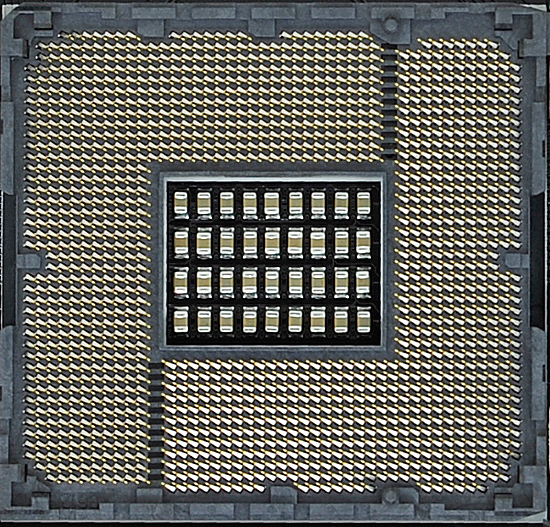
A year later we have Lynnfield, and it fits in a much tighter space:

The LGA-1156 socket and Lynnfield CPUs are about as big as the old LGA-775 sockets/chips:
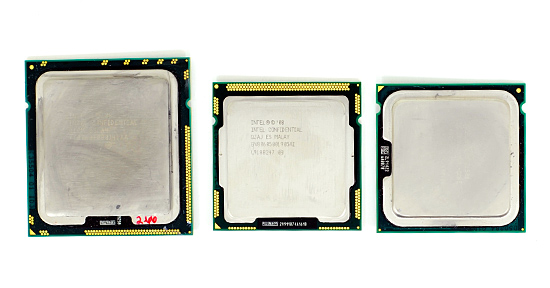
From Left to Right: Intel Core i7 "Bloomfield" (LGA-1366), Intel Core i7 "Lynnfield" (LGA-1156), Intel Core 2 Quad "Yorkfield" (LGA-775)
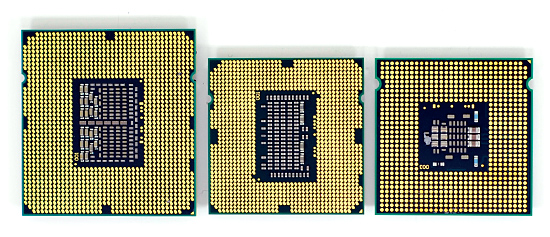
Note the pad densitiy of Lynnfield vs. LGA-775 processors
The installation process is largely the same as any other Intel LGA socket, the difference being that LGA-1156 uses a new one-sided retention mechanism.

After the socket is "open", gently place the CPU on top of the pins. The chip can only fit in one direction so just pay attention:
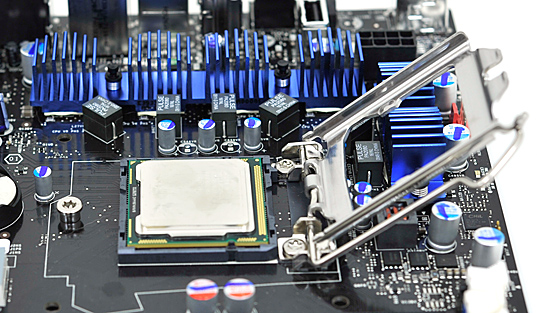
With the chip in the socket and the lever still pulled back, move the socket cover over the CPU and slide its teeth under the retention screw on the opposite side:

Then, lower the lever, lock it in place and you're good to go:
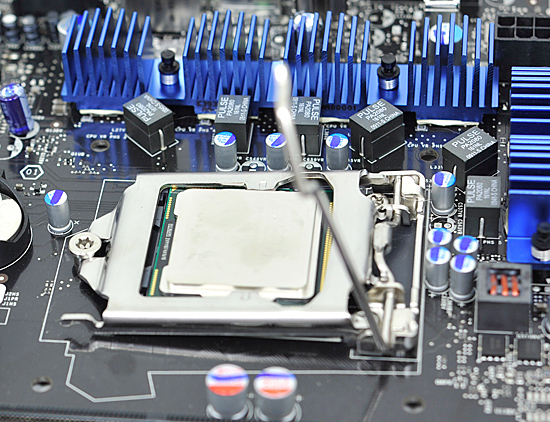











343 Comments
View All Comments
strikeback03 - Tuesday, September 8, 2009 - link
How would you have graphics then? You would be limited to the 4xPCIe off the P55 on motherboards which support it, as there are no integrated graphics (yet)MX5RX7 - Tuesday, September 8, 2009 - link
I'm not sure that CPU/GPU integration is a good thing, from a consumer standpoint. At least in the short term.For example, in the article you mention how the majority of modern games are GPU, not CPU limited. The current model allows us to purchase a very capable processor and pair it with a very capable GPU. Then, when the ultra competitive GPU market has provided us with a choice of parts that easily eclipse the performance of the previous generation, we either swap graphics cards for the newer model, or purchase a second now cheaper identical card and (hopefully) double our game performance with SLI or Crossfire. All without having to upgrade the rest of the platform.
With the current model, a new graphics API requires a new graphics card. With Larrabee, it might very well require a whole new platform.
Ben90 - Tuesday, September 8, 2009 - link
Yea, im really excited for Larrabee, who knows if it will be good or not... but with intel kicking ass in everything else, it will at least be interestingWith overclocking performance seemingly being limited by the PCI-E controller, it seems like an unlocked 1156 would be pretty sweet
All in all i gotta admit i was kinda bitter with this whole 1156 thing because i jumped on the 1336 bandwagon and it seemed that Intel was mostly just jacking off with the new socket... but this processor seems to bring a lot more innovation than i expected (just not in raw performance, still great performance though)
chizow - Tuesday, September 8, 2009 - link
Was worried no one was going to properly address one of the main differences between P55 and X58, thanks for giving it a dedicated comparison. Although I would've like to have seen more games tested, it clearly indicates PCIE bandwidth becoming an issue with current generation GPUs. This will only get worst with the impending launch of RV8x0 and GT300.Anand Lal Shimpi - Tuesday, September 8, 2009 - link
PCIe bandwidth on Lynnfield is only an issue with two GPUs, with one you get the same 16 lanes as you would on X58 or AMD 790FX.If I had more time I would've done more games, I just wanted to focus on those that I knew scaled the best to see what the worst case scenario would be for Lynnfield.
In the end 2 GPUs are passable (although not always ideal on Lynnfield), but 4 GPUs are out of the question.
Take care,
Anand
JumpingJack - Thursday, September 10, 2009 - link
Anand, a few other sites have attempted SLI/Xfire work ... on in particular shows 4 GPUs having no impact at all on gaming performance in general -- well, 3 or 4 FPS, but nothing more than a few percentages over norm.Could your configuration with beta or just bad first release drivers be an issue?
Jack
JonnyDough - Tuesday, September 8, 2009 - link
Would it be possible to incorporate two GPU controllers onto a die instead of one or is that what they'll be doing with future procs? I would think that two controllers with a communication hub might supply the needed bandwidth of x16 + x16.Comdrpopnfresh - Tuesday, September 8, 2009 - link
with two gpu's being passable- do you foresee that applying to both two independent gpus, as well as the single dual-card gpus?Ryan Smith - Tuesday, September 8, 2009 - link
Yes. The only difference between the two is where the PCIe bridge chip is. In the former it's on the mobo, in the latter it's on the card itself.Eeqmcsq - Tuesday, September 8, 2009 - link
Talk about bringing a bazooka to a knife fight. AMD better be throwing all their innovation ideas and the kitchen sink into Bulldozer, because Intel is thoroughly out-innovating AMD right now.